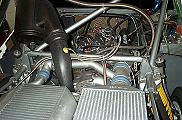The suspension was broadly based on the successful layout used on the 037, with double wishbones front and rear and with a
number of adjustable pick-up points.
The biggest novelty for the car was the all new drivetrain
with a four wheel drive system with three differentials.
The gearbox was mounted centrally, ahead of the engine and a spur gear set transmits the power from the gearbox to the centre diff. From
this propshafts carry the power to the front and rear differentials.
In the centre diff there was a Ferguson type viscous coupling, whilst mechanical self-locking types were fitted
at the front and rear. The drive torque split was adjustable, the road cars had 30% front and 70% rear.
The road cars had a declared top speed of 225km/h, took 6 seconds to get to 100km/h, and completed the standing km in 25.6 seconds.
The S4 was homologated on 1st November
1985 and made it's World Championship debut on the RAC in that same month
where it finished first and second. It continued to score several victories
in 1986 but was beaten to the championship by Peugeot. After the tragic
death of Toivonen and Cresto in the Tour de Corse of that year Group B
was banned, and thus the S4 ended it's career somewhat prematurely. It was followed by the all dominating HF 4WD & integrale.
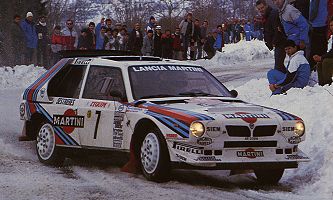 Designed to replace the 037, the Delta S4 followed
Audi and Peugeot in the move to four wheel drive. The program began in 1983 and the first prototype was ready in June
1984. Starting from a clean sheet of paper, with all the experience of the 037 and Stratos, a tubular space frame
chassis was adopted, the bare frame
weighing under 100kg. The composite (Nomex, carbon-fibre and Kevlar) body panels are bonded to the
steel structure to add to its rigidity. The entire front and rear bodywork sections are hinged for easy access. The whole exterior design is dominated by the
numerous air intakes, those on the roof cool the engine bay and oil cooler, the lateral ones feed the intercoolers whilst the intake at the base of the windscreen
ducts air back (through the sills) to cool the exhaust system.
Designed to replace the 037, the Delta S4 followed
Audi and Peugeot in the move to four wheel drive. The program began in 1983 and the first prototype was ready in June
1984. Starting from a clean sheet of paper, with all the experience of the 037 and Stratos, a tubular space frame
chassis was adopted, the bare frame
weighing under 100kg. The composite (Nomex, carbon-fibre and Kevlar) body panels are bonded to the
steel structure to add to its rigidity. The entire front and rear bodywork sections are hinged for easy access. The whole exterior design is dominated by the
numerous air intakes, those on the roof cool the engine bay and oil cooler, the lateral ones feed the intercoolers whilst the intake at the base of the windscreen
ducts air back (through the sills) to cool the exhaust system.
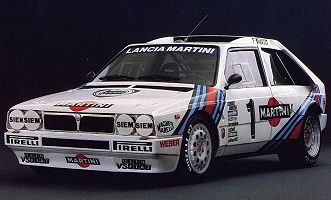 An all new engine was designed by Abarth. This had a capacity of 1759cc, used
an alloy cylinder head and cylinder block, had four valves per cylinder,
twin overhead camshafts, fuel injection (with two injectors per cylinder)
and most interestingly both a turbocharger and a supercharger with twin
air-to-air intercoolers. A power of 480bhp was produced at 8400rpm. The unusual route of using a supercharger and turbocharger together was to
avoid the poor performance of the large turbochargers at low engine speeds. On the S4 the order, from the air intake was turbocharger, intercooler,
supercharger, intercooler, inlet manifold (schematic diagram).
Once the supercharger became less efficient, at higher engine speeds where the turbo performed better, a bypass
allowed the turbo to feed the engine directly.
An all new engine was designed by Abarth. This had a capacity of 1759cc, used
an alloy cylinder head and cylinder block, had four valves per cylinder,
twin overhead camshafts, fuel injection (with two injectors per cylinder)
and most interestingly both a turbocharger and a supercharger with twin
air-to-air intercoolers. A power of 480bhp was produced at 8400rpm. The unusual route of using a supercharger and turbocharger together was to
avoid the poor performance of the large turbochargers at low engine speeds. On the S4 the order, from the air intake was turbocharger, intercooler,
supercharger, intercooler, inlet manifold (schematic diagram).
Once the supercharger became less efficient, at higher engine speeds where the turbo performed better, a bypass
allowed the turbo to feed the engine directly.
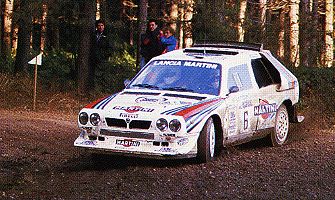 |
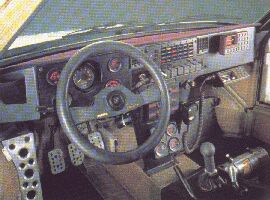 |
Technical Details (Stradale)
| Driveline | longitudinal engine at centre/rear with four wheel drive system |
| Engine | 1759cc (88.5x71.5mm) 16v dohc 4cyl supercharged and turbocharged with 250bhp @ 6,750rpm
dry sump lubrication, Weber IAW injection, Marelli ignition (induction system) |
| Suspension | front : double wishbone with telescopic dampers and coil springs
rear : double wishbone with twin telescopic dampers and coil springs wheels & tyres (front & rear) : 8x16" rims with 205/55 VR16 wheelbase : 2440mm track (front/rear) : 1500mm / 1520mm |
| Brakes | front : discs, ventilated, diameter 300mm
rear : discs, ventilated, diameter 300mm mechanical handbrake on the rear callipers |
| Steering | Rack and pinion with vacuum servo, 2.75 turns lock-to-lock |
| Gearbox | 5 speed manual (ZF) |
| Dimensions | click here |
| Weight | 1200kg
distribution (front/rear) : 43.75% / 56.25% |
click here for a cutaway drawing of the S4.
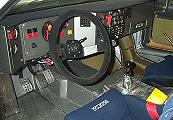 |
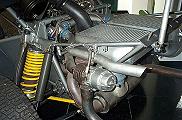 |
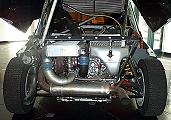 |
For books on Lancia see our Online Bookstore
There is also a list of all our picture galleries (including museums, motorshows and various events).
Wallpapers/Desktop Backgrounds of numerous Lancia's are available to download.
See also our Lancia advertisements gallery, where several adverts can be seen.
Delta S4 comment form
Your Comments
This is the best car in the history of the rallyes. (anonymous, Spain)
One of the coolest cars ever made, I want one. (anonymous student!)
This car reflects the way
that all rally cars should follow. It belongs to the best part of the history
of rallyes : the group B one. Even without the charmming design of the
037 Rally, it is technically fantastic. (Pedro M, Portugal)
This car is made like any supercars should be made. ligth any powerfuld. It´s so cool! (Carsten
L. Denmark)
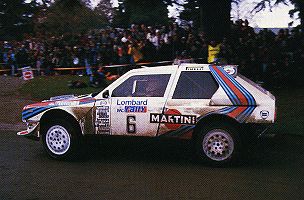
Use the buttons at the top to navigate
further, or
Copyright © 2000 to 2008 CarsfromItaly
